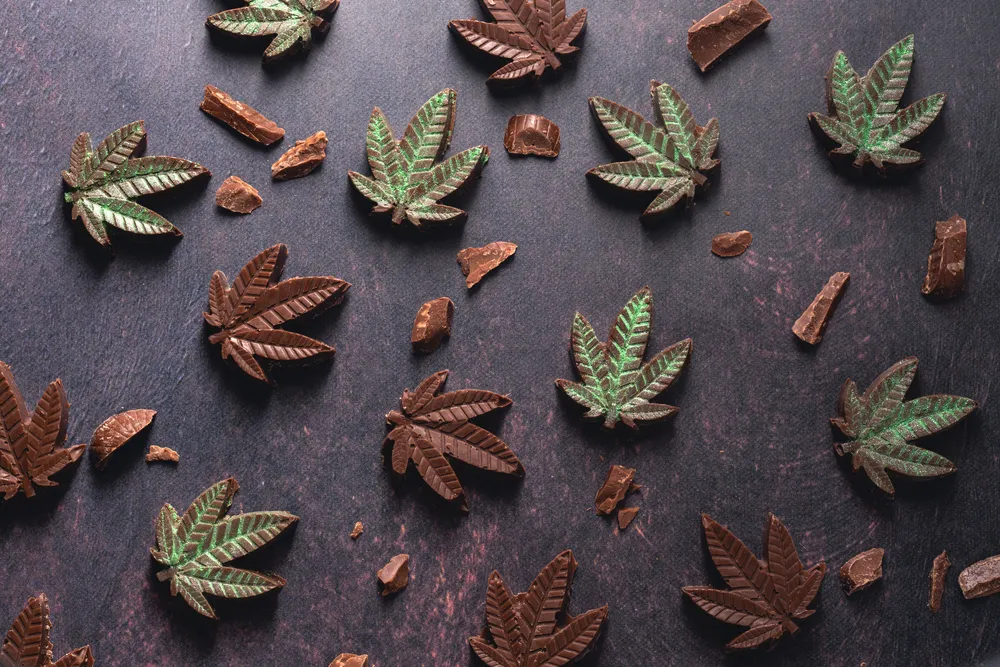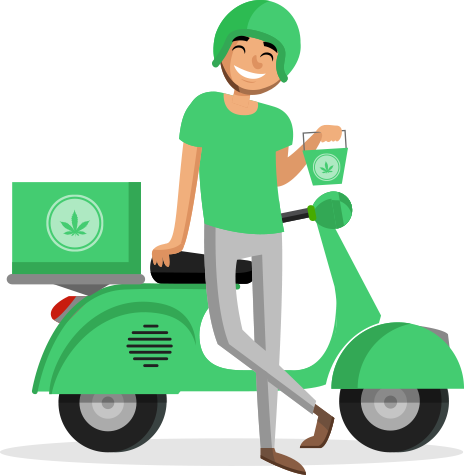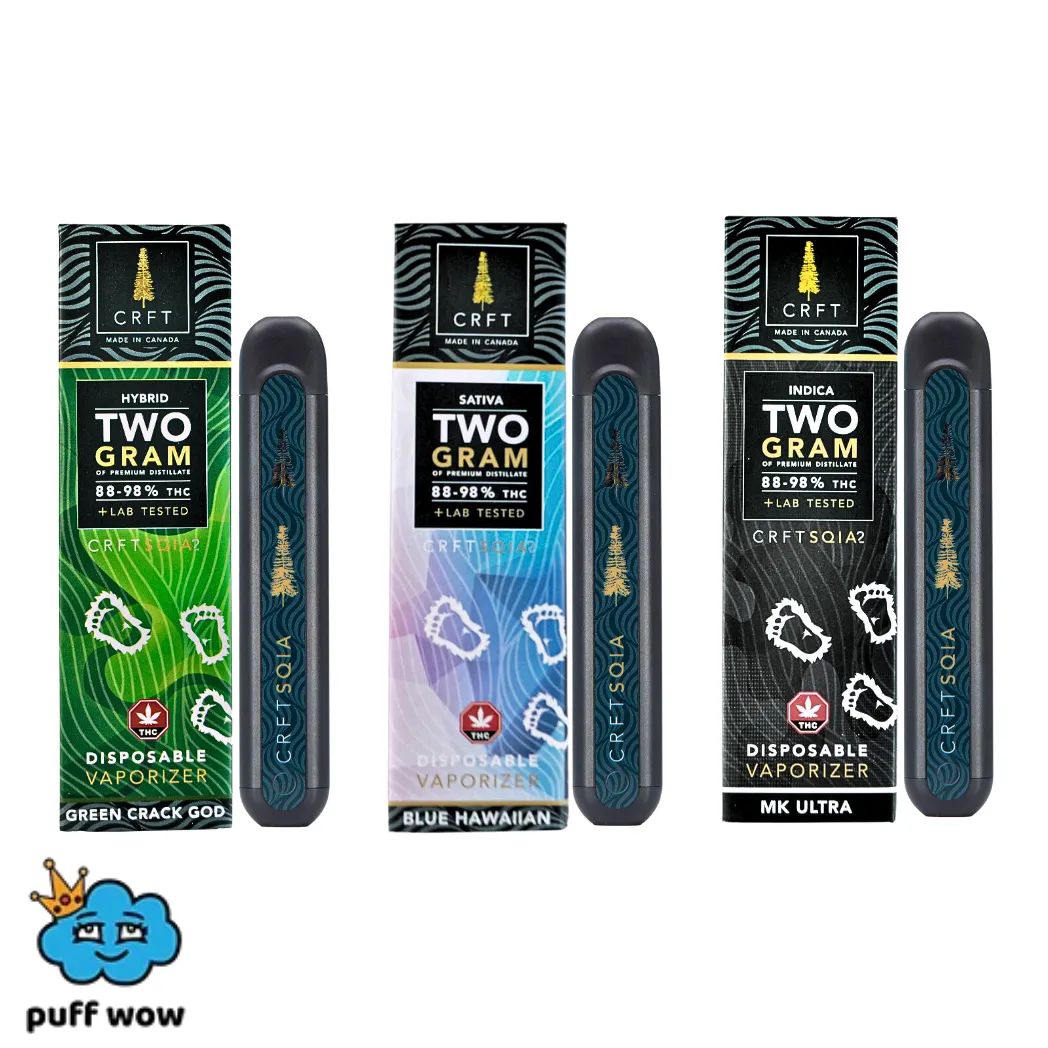
Cannabis edibles have swiftly gained immense popularity in Canada, becoming one of the preferred methods of consumption for both medical and recreational users. With an array of delicious options ranging from gummies and chocolates to infused beverages and baked goods, edibles offer a discreet and enjoyable way to experience the effects of cannabis. Unlike smoking or vaping, edibles provide a smoke-free alternative that appeals to those looking for a more convenient and socially acceptable way to consume cannabis.
Understanding the duration of edibles’ effects is crucial for anyone indulging in these tasty treats. Unlike the immediate onset of effects experienced through inhalation methods, edibles take longer to kick in but often offer a longer-lasting and more potent high. This delay in onset and extended duration can catch some users off guard if they’re not prepared, leading to potentially uncomfortable experiences.
Therefore, having a clear understanding of how long an edible high lasts can help users plan their consumption more effectively and enjoy a safer and more enjoyable cannabis experience. In this article, we’ll delve deeper into the world of cannabis edibles, exploring how they work in the body, factors affecting their potency and duration, and tips for managing their effects responsibly. So, let’s get started on unraveling the mysteries of edible highs!
Cannabis edibles refer to food and drink products that have been infused with cannabis extracts, such as THC or CBD. These products offer a tasty and convenient alternative to traditional methods of cannabis consumption like smoking or vaping. In the Canadian market, there is a diverse range of edibles available to cater to various tastes and preferences.
The types of edibles available in Canada are as varied as they are delicious. One of the most popular categories is gummies, which come in a variety of flavours, shapes, and THC/CBD concentrations. These chewy treats are not only enjoyable to eat but also discreet and easy to dose, making them a favourite among both novice and experienced users.
Chocolates are another beloved choice among cannabis enthusiasts. Whether it’s dark, milk, or white chocolate, infused chocolates offer a decadent way to indulge in the benefits of cannabis. They often come in bar or bite-sized form, allowing users to easily control their dosage.
For those who prefer baked goods, there’s a plethora of options available, including cookies, brownies, and even cannabis-infused cakes. These treats often mask the taste of cannabis effectively, making them a popular choice for those who are sensitive to the plant’s natural flavour.
The process of making cannabis edibles involves infusing food or drink products with cannabis extracts, such as THC or CBD oils. The extracts are typically derived from cannabis plants using various extraction methods, like CO2 extraction or solvent-based extraction.
Once the cannabis extracts are obtained, they are carefully measured and blended into the chosen food or drink base. This ensures that each edible product contains a consistent and accurate dose of THC or CBD. The infused mixture is then baked, cooked, or otherwise prepared according to the specific recipe, ensuring that the cannabinoids are evenly distributed throughout the product.
In Canada, licensed producers and manufacturers are responsible for ensuring that their cannabis edibles comply with strict regulations regarding potency, labeling, and packaging. This ensures that consumers can purchase edibles with confidence, knowing that they are getting a safe and reliable product.
Cannabis edibles offer a delicious and convenient way to enjoy the benefits of cannabis. Whether you prefer sweet treats like gummies and chocolates or savoury options like infused snacks and beverages, there’s something for everyone in the Canadian market. Understanding how these edibles are made and the different forms they come in can help you make informed choices and enhance your overall cannabis experience.
Understanding how edibles work in the body is essential for anyone considering consuming them. Unlike smoking or vaping, which deliver cannabinoids like THC and CBD directly into the bloodstream through the lungs, edibles take a different route to produce their effects.
When you consume an edible, whether it’s a gummy, chocolate, or baked good, it first enters your digestive system. The food is broken down in the stomach and intestines, where cannabinoids like THC are released and absorbed into the bloodstream. This process can take anywhere from 30 minutes to 2 hours, depending on various factors like metabolism, stomach contents, and the individual’s digestive health.
Unlike inhalation methods, which provide almost immediate effects, edibles’ effects are delayed due to this digestion process. However, once absorbed, the effects of edibles can be more potent and long-lasting compared to other consumption methods.

One fascinating aspect of how edibles work in the body involves the liver’s role in metabolizing THC. When THC is ingested, it travels to the liver, where it undergoes a process called first-pass metabolism. During this process, THC is converted into its more potent form, known as 11-hydroxy-THC.
11-hydroxy-THC is significantly more potent than THC and has a higher affinity for the body’s cannabinoid receptors, leading to stronger and often longer-lasting effects. This is one reason why the effects of edibles can feel more intense and different from those of smoking or vaping.
It’s worth noting that the conversion of THC to 11-hydroxy-THC varies from person to person and can be influenced by factors like liver health and genetics. Additionally, consuming alcohol or other substances along with edibles can affect how quickly and efficiently THC is metabolized, potentially altering the intensity and duration of the high.
The duration of an edible high can vary widely from person to person and depends on several factors that influence how the body processes and reacts to cannabis. Understanding these factors can help users better predict the duration of their high and plan their consumption accordingly.
One of the most significant factors affecting the duration of an edible high is the potency of the product, typically measured by its THC concentration. Edibles come in a range of potencies, from low-dose options with 2.5 mg of THC per serving to high-potency products containing 100 mg or more. Generally, higher-potency edibles will produce stronger and longer-lasting effects compared to lower-potency options. It’s crucial to read product labels carefully and start with a low dose if you’re new to edibles or unsure of your tolerance level.
Metabolism plays a vital role in how quickly the body processes and eliminates THC and other cannabinoids. Individuals with faster metabolisms may feel the effects of edibles more quickly but also may metabolize them more rapidly, leading to a shorter duration of the high. Conversely, those with slower metabolisms may experience delayed onset but longer-lasting effects. Additionally, frequent cannabis users often develop a tolerance to THC over time, which can also affect the duration and intensity of the high.
Body weight and composition can also influence how long an edible high lasts. Generally, individuals with higher body weights may require a higher dose of THC to feel the effects, and the high may not last as long due to faster metabolism and distribution of cannabinoids throughout the body. On the other hand, individuals with lower body weights may be more sensitive to THC and may experience longer-lasting effects from the same dose.
What’s in your stomach when you consume an edible can also affect its absorption and the duration of its effects. Consuming edibles on an empty stomach may lead to faster onset but could also result in a shorter duration of the high. Eating a meal before consuming edibles can slow down the absorption of THC, potentially extending the high’s duration. Additionally, the presence of other substances like alcohol or medications can interact with THC and affect how it’s metabolized, leading to unpredictable changes in the intensity and duration of the high.
Understanding the average duration of an edible high is essential for planning your consumption and ensuring a positive experience. While individual experiences can vary, there’s a general timeline that many users can expect when consuming cannabis edibles.
After consuming an edible, the effects typically don’t kick in immediately like they do with smoking or vaping. Instead, most users start to feel the initial effects within 30 minutes to 2 hours after ingestion. This delay is due to the digestion and absorption process, as the cannabinoids are metabolized and enter the bloodstream.
Once the effects start to manifest, they gradually intensify until reaching their peak. For most people, the peak effects of edibles occur around 2 to 4 hours after consumption, though this can vary based on the factors mentioned earlier. During this peak period, users may experience a strong and euphoric high, along with potential side effects like dry mouth, red eyes, and increased appetite.
After reaching the peak, the effects of the edible high usually plateau for a while before gradually starting to taper off. The peak effects can last anywhere from 2 to 6 hours, again depending on factors like potency and individual metabolism.

As the peak effects start to subside, users enter the tail-end phase of the edible high. During this time, the effects become less intense but can still be noticeable. Many users report feeling relaxed, calm, and sometimes sleepy as the high begins to wear off.
The tail-end effects typically last for another 1 to 3 hours, bringing the total duration of the edible high to around 4 to 12 hours from start to finish. However, it’s worth noting that residual effects, such as feeling groggy or fatigued, can linger into the next day for some individuals, especially with higher doses or less frequent users.
The duration and intensity of an edible high can be influenced by various factors beyond just the potency of the product and individual metabolism. Understanding these additional factors can help users better manage their experience and make informed decisions when consuming cannabis edibles.
One significant factor that can affect the onset and duration of an edible high is whether you consume the edible on an empty stomach or a full stomach. Eating edibles on an empty stomach can lead to faster absorption and quicker onset of effects, but these effects may not last as long. Conversely, consuming edibles with a meal or after eating can slow down the absorption of THC, potentially extending the high’s duration. A balanced meal with healthy fats can be particularly effective in enhancing the absorption of cannabinoids, leading to a more prolonged and enjoyable experience.
Hydration plays a crucial role in how the body processes and metabolizes THC and other cannabinoids. Dehydration can lead to slower metabolism and elimination of THC, potentially prolonging the high. On the other hand, staying well-hydrated can help your body more efficiently process THC, leading to a shorter and more manageable high. It’s recommended to drink plenty of water before and after consuming edibles to maintain optimal hydration levels and support your body’s natural detoxification processes.
Consuming medications, alcohol, or other substances along with cannabis edibles can lead to unpredictable interactions that can either extend or shorten the duration of the high. Some medications can potentiate the effects of THC, making them feel stronger and last longer. Conversely, other medications may inhibit the metabolism of THC, leading to a prolonged high. Alcohol, in particular, can amplify the effects of THC and increase the risk of experiencing adverse effects like nausea, dizziness, and impaired judgment.
It’s essential to consult with a healthcare professional or pharmacist before combining cannabis edibles with medications or other substances to understand potential interactions and risks fully.
Managing the effects of cannabis edibles requires a combination of knowledge, patience, and self-awareness. With the delayed onset and potential for stronger effects compared to other consumption methods, it’s crucial to approach edibles with caution and respect. Here are some tips to help you manage the effects of cannabis edibles responsibly.
One of the golden rules when it comes to consuming cannabis edibles is to start with a low dose and gradually increase as needed. This approach allows you to gauge your tolerance and sensitivity to THC without overwhelming your system. Many experts recommend starting with a dose of 2.5 to 5 mg of THC for beginners or those unfamiliar with a particular product’s potency. After waiting for the effects to kick in and assessing how you feel, you can decide whether to increase the dose in small increments. Remember, it’s always easier to take more if needed than to deal with the discomfort of taking too much.

After consuming an edible, it’s essential to wait at least 2 to 4 hours before considering taking another dose. The delayed onset of edibles can lead some people to make the mistake of consuming more thinking that the initial dose wasn’t effective. This can result in overconsumption and potentially uncomfortable or even distressing effects. Patience is key when it comes to edibles; give your body time to process and feel the effects before deciding whether to consume more. Keeping track of your consumption and effects in a journal or using a cannabis tracking app can help you better understand your personal tolerance and optimal dosage.
Even with careful dosing, sometimes the effects of edibles can be stronger than expected, leading to discomfort, anxiety, or other unwanted side effects. If you find yourself in this situation, there are several strategies you can try to help manage the intensity of the high:
If you’re experiencing severe discomfort or feel like you’re having a negative reaction to an edible, it’s essential to seek medical attention or contact a healthcare professional immediately.
Calculating the potency of cannabis edibles is crucial for ensuring a safe and enjoyable experience. With a wide range of products available in the Canadian market, it’s essential to understand how to interpret THC percentages and milligrams to make informed decisions about dosing. Here’s a guide to help you navigate edible potency and understand how to calculate it effectively.
When it comes to cannabis edibles, you’ll often see two primary measurements of potency: THC percentage and total milligrams of THC per package or serving. The THC percentage indicates the concentration of THC in the product, while the total milligrams tell you the overall amount of THC contained in the edible.
For example, if a chocolate bar contains 100 mg of THC and is divided into 10 pieces, each piece would contain approximately 10 mg of THC. If the THC percentage is also listed, say 10%, it means that 10% of the total weight of the chocolate bar is THC. Understanding these measurements allows you to calculate the potency of individual servings and adjust your dosage accordingly.
Reading product labels carefully is essential for understanding dosing and calculating edible potency accurately. Here are some tips to help you decipher product labels and make informed decisions:
As we wrap up our comprehensive guide to understanding cannabis edibles, it’s crucial to recap the key points that can help you navigate the world of edibles with confidence and responsibility.
Throughout this article, we’ve explored the various types of cannabis edibles available in the Canadian market, delved into how they work in the body compared to other consumption methods, and discussed the factors that can influence the duration and intensity of an edible high. We’ve also provided valuable tips for managing the effects of edibles, calculating potency, and reading product labels to make informed dosing decisions.
The importance of responsible consumption cannot be overstated when it comes to cannabis edibles. Starting with a low dose, waiting between doses, and understanding your own tolerance are essential practices to ensure a safe and enjoyable experience. The delayed onset and potential for stronger effects make edibles unique, requiring a thoughtful and cautious approach to dosing and consumption.
We also encourage readers to share their experiences and knowledge with others in the community. Cannabis consumption is a personal journey, and everyone’s experience with edibles can vary based on individual factors like metabolism, tolerance, and body weight. By sharing your insights, tips, and stories, you can help educate and support others who are exploring or considering cannabis edibles for the first time.
Navigating the edible landscape requires a blend of knowledge, patience, and self-awareness. By following the guidelines and tips provided in this guide, you can enjoy a safer and more enjoyable experience with cannabis edibles. Remember to start low and go slow, listen to your body, and always prioritize your well-being above all else. Happy exploring, and here’s to responsible and informed cannabis consumption!
Order weed online in Winnipeg. Puff Wow makes it easy to buy Cannabis online with our secure checkout and fast delivery.
Winnipeg, Manitoba
Canada

